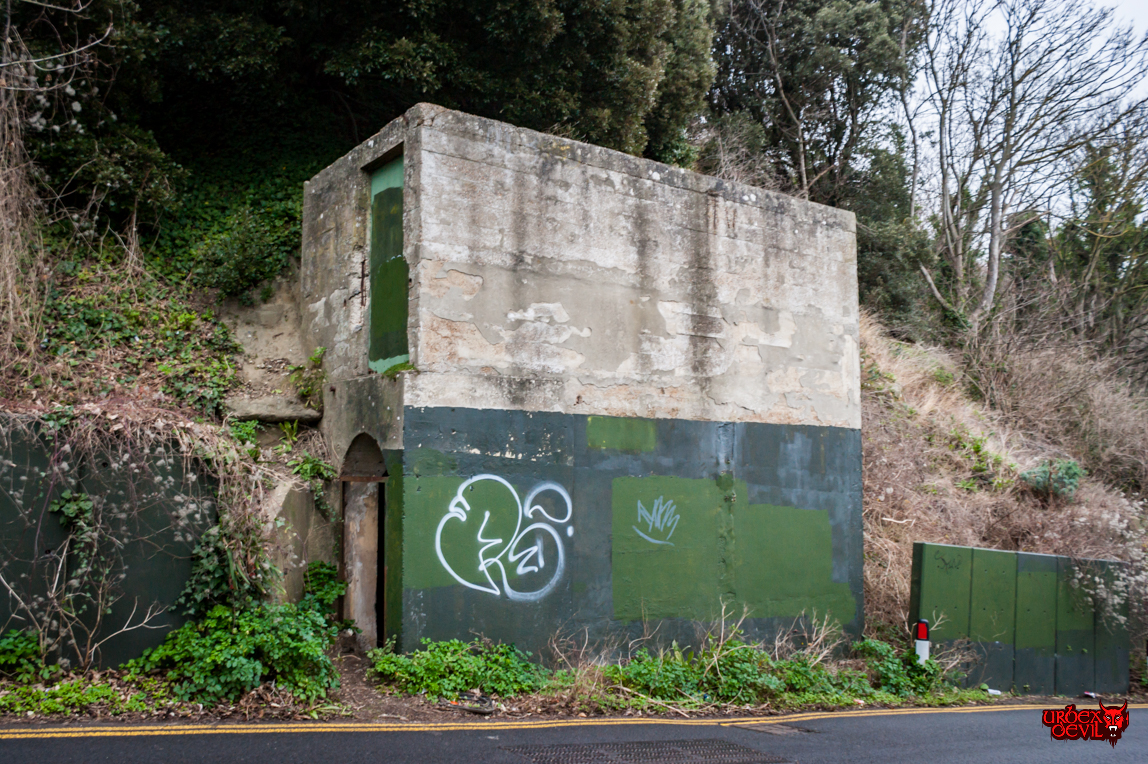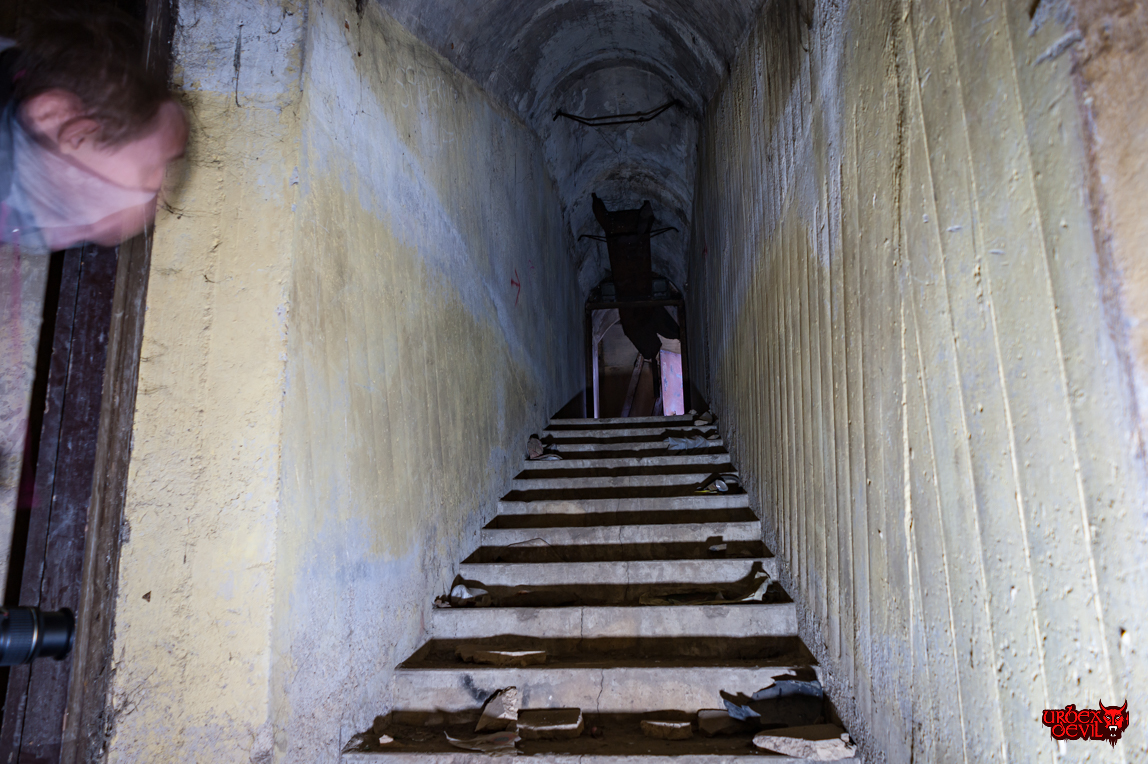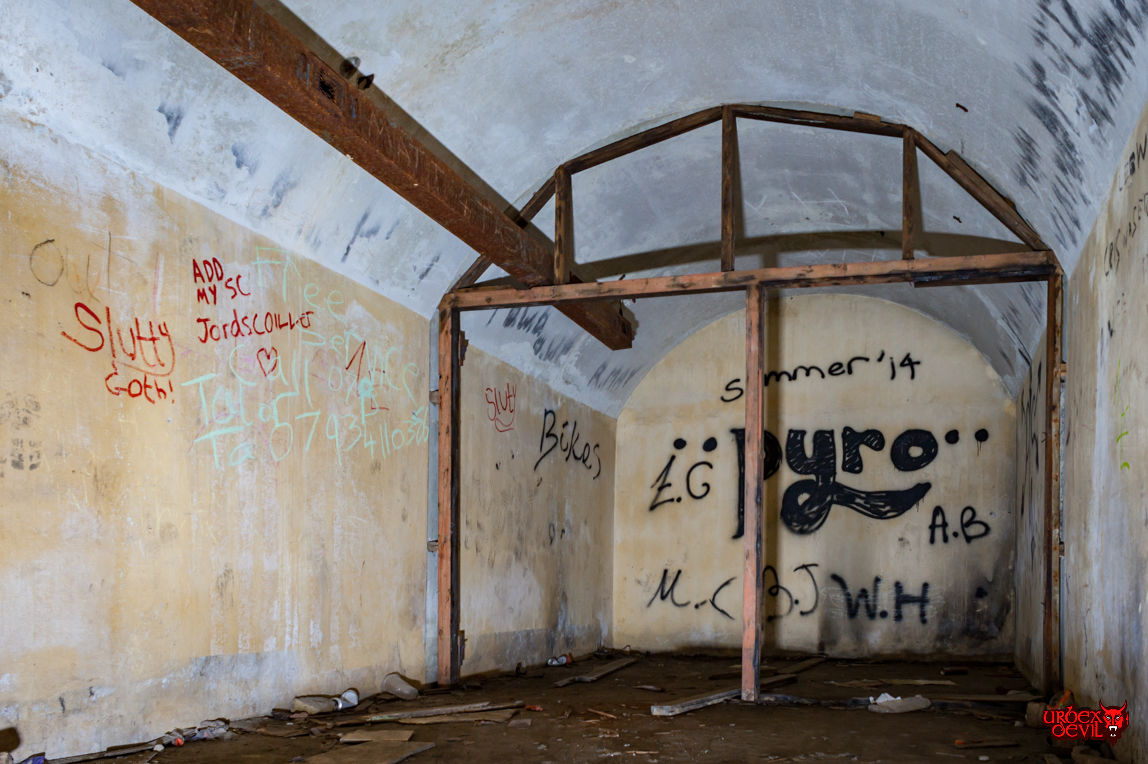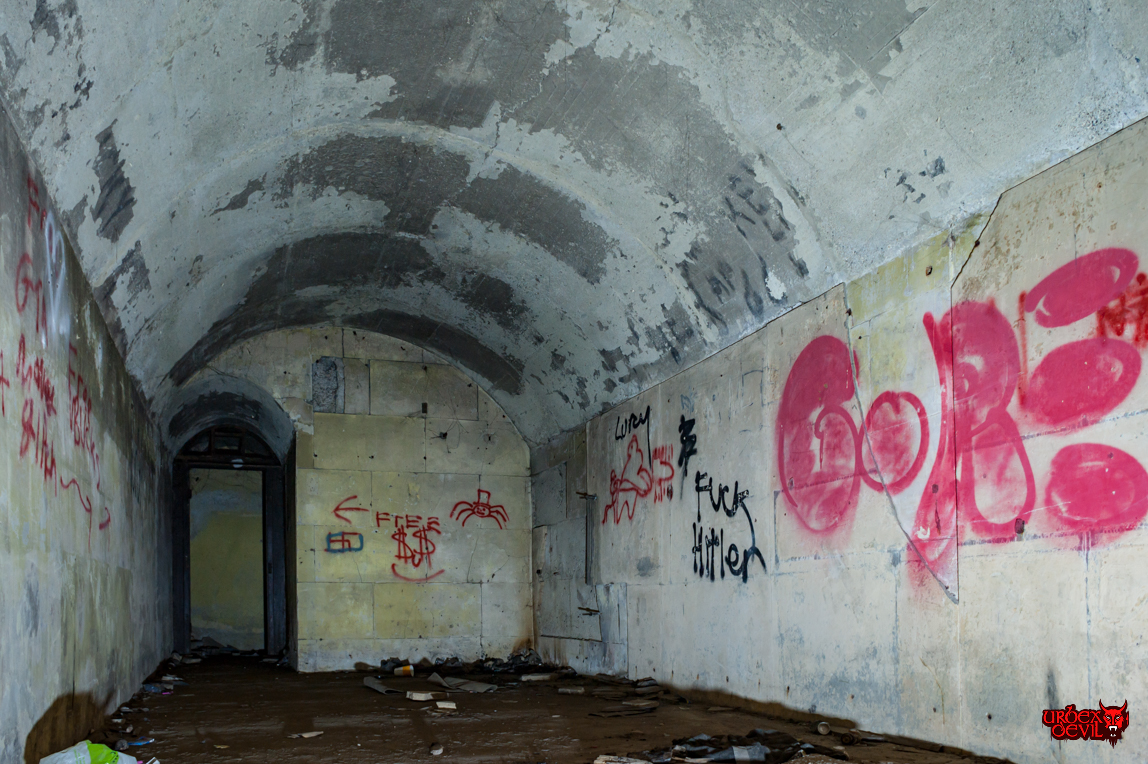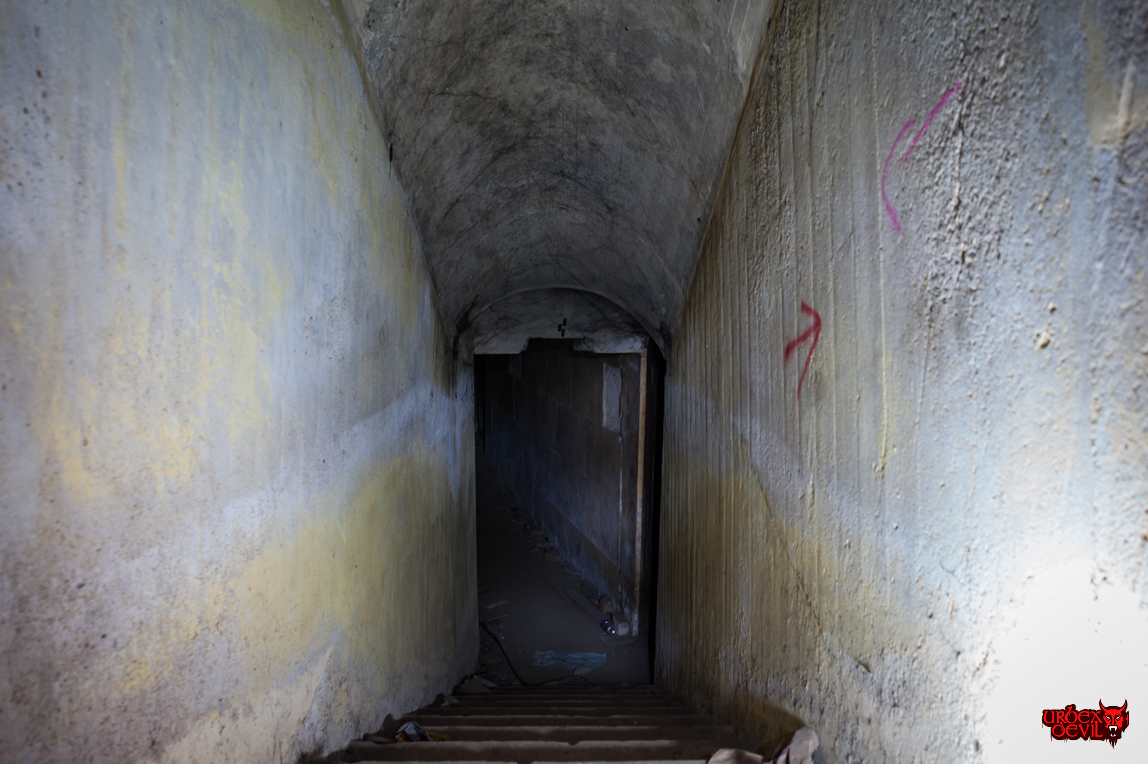Another location that’s been on the list for quite some time and exploring the day nearby in Dover, made perfect sense to head over the short trip to the Road of Remembrance Bunker.
It’s my understanding that this place has been accessible for years and the graffiti certainly confirms this, which is a shame considering the history and location of the bunker.
Interestingly, someone has been hard at work tunneling through the back of the wall into the cliff. Again, to my knowledge, this goes nowhere so I am baffled why someone would go to so much effort.
A quick check of other reports online and this place hasn’t changed for quite some time, only with the deeper tunnel dug as mentioned above.
History below from the valuable resource that is Subbrit
The Road of Remembrance, originally Slope Road, was renamed in the early 1920s in memory of the several million First World War servicemen who had passed down it as they marched from basic training at Shorncliffe Camp on their way to the harbour and embarkation for the continent. Near the bottom of the road though is a strange concrete structure, a survival from two decades later and now one of the country’s oddest remnants of Second World War brutalist architecture. Where other bunkers strive to be unobtrusive, this tries to hide in plain sight by disguising itself as an upended biscuit box. But this roughly-built concrete structure with its blank square face is just the entrance and service end, and the important part, comprising several vaulted rooms, lies further back, buried deep into the cliff face behind. The structure appears to have been built at a later stage of the war, based on a message from the Vice Admiral at Dover in October 1942 describing arrangements made to build an underground structure containing a telephone exchange and a small control room. The estimated cost of the project was given as £1000 and the construction period three months. Unusually for a secret bunker, it is believed to have been built by Otto Marx builders, a local firm also responsible for two other bunkers on the Leas, one of which was reputedly destroyed by a German bomb before the concrete had completely set. Using non-service contractors rather than say, the Royal Engineers, may have been a necessary relaxation of normal procedures due to manpower shortages.

